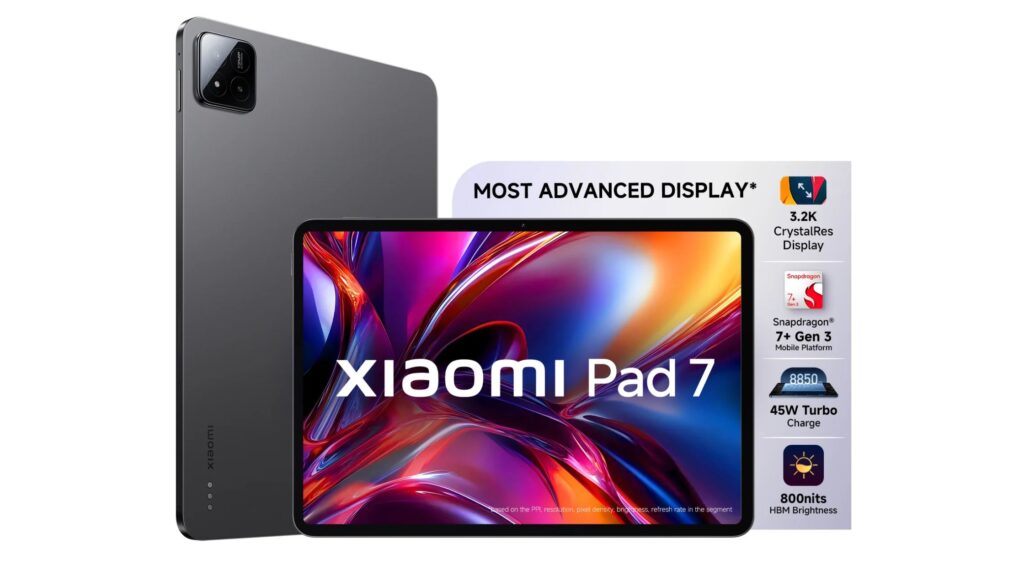The Quest for the Perfect Picture
Choosing the right display for your home isn’t merely about screen size or brand loyalty; it’s about understanding the core technologies that bring images to life.
Imagine settling in for a cinematic masterpiece, a high-stakes gaming session, or simply catching up on your favorite shows.
The quality of your display profoundly impacts that experience.
This long-form guide will meticulously dissect LED, QLED, and OLED technologies, comparing their strengths, weaknesses, and ideal use cases. By the end, you’ll be equipped with the knowledge to make an informed decision, ensuring your next TV purchase perfectly matches your viewing preferences and budget.
Understanding the Foundation: What is LED TV?
Before diving into the more advanced display technologies, it’s crucial to understand the foundation: LED TVs. Despite the name, “LED TV” is somewhat of a misnomer. These televisions are, in essence, a refined version of traditional LCD (Liquid Crystal Display) TVs. The “LED” refers to the Light Emitting Diodes used for backlighting the LCD panel, replacing the older CCFL (Cold Cathode Fluorescent Lamp) backlights.
How LED TVs Work:
An LED TV uses a liquid crystal layer to produce the image, which doesn’t emit its own light. Instead, it relies on a separate backlight system. The LCD pixels act like tiny shutters, controlling how much light from the LEDs passes through to create the picture. Color filters then add the necessary hues.
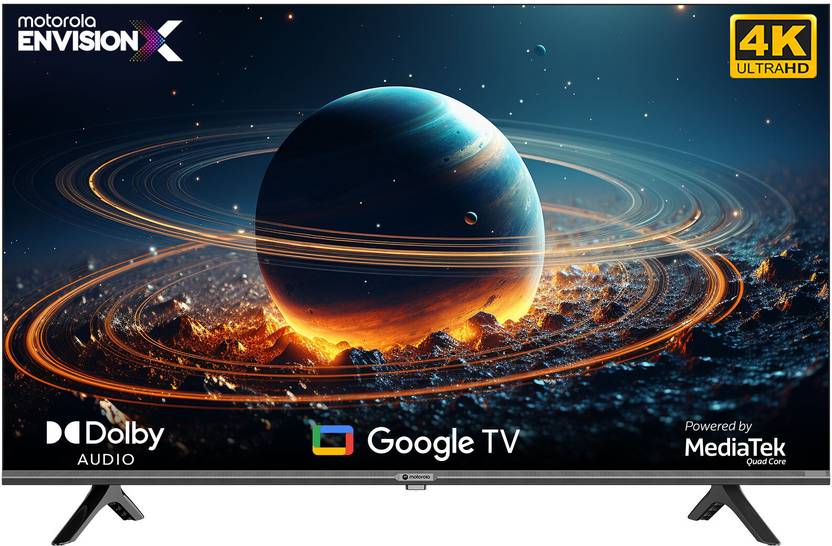
There are two primary types of LED backlighting:
- Edge-lit LED: LEDs are placed along the edges of the screen, and light is distributed across the panel using a diffuser. This allows for incredibly thin TV designs and generally offers good energy efficiency. However, achieving uniform brightness and deep blacks can be challenging, as the entire backlight dims or brightens together.
- Full-Array LED (Direct LED): LEDs are distributed across the entire rear surface of the screen, directly behind the LCD panel. This allows for “local dimming,” where specific zones of LEDs can be dimmed or brightened independently. This results in significantly better contrast and black levels compared to edge-lit models, as areas of the screen displaying dark content can have their backlights turned down, while bright areas remain vibrant.
Pros of LED TVs:
- Affordability: Generally the most budget-friendly option, making them accessible to a wide range of consumers.
- Brightness: Capable of producing high brightness levels, making them suitable for well-lit rooms.
- Energy Efficiency: More energy-efficient than older display technologies.
- Variety: Available in a vast array of sizes and features across numerous brands.
- Longevity: Known for their durable and long-lasting panels.
Cons of LED TVs:
- Limited Contrast: Even with full-array local dimming, they cannot achieve true black levels, leading to a noticeable “gray” instead of pure black in dark scenes.
- Backlight Blooming: In some cases, particularly with fewer local dimming zones, light from bright objects can “bloom” or create a halo effect around them on a dark background.
- Viewing Angles: Picture quality, including color and contrast, can degrade when viewed from wide off-angles.
- Less Immersive: Due to the inherent limitations of backlighting, the overall viewing experience may be less immersive compared to emissive technologies.
User Experiences with LED TVs:
Many users appreciate LED TVs for their excellent value proposition. For everyday viewing, casual gaming, and watching in rooms with ambient light, LED TVs perform admirably. Users frequently praise their brightness, especially in sunny living rooms. However, discerning viewers or those accustomed to premium displays might find the black levels and contrast lacking for dedicated home theater setups.
Stepping Up the Brightness: What is QLED TV?
QLED, which stands for Quantum-dot Light Emitting Diode, is Samsung’s proprietary enhancement of LED technology. It’s important to note that QLED TVs are still fundamentally LCD TVs with an LED backlight. The key differentiator is the addition of a quantum dot layer.
How QLED TVs Work:
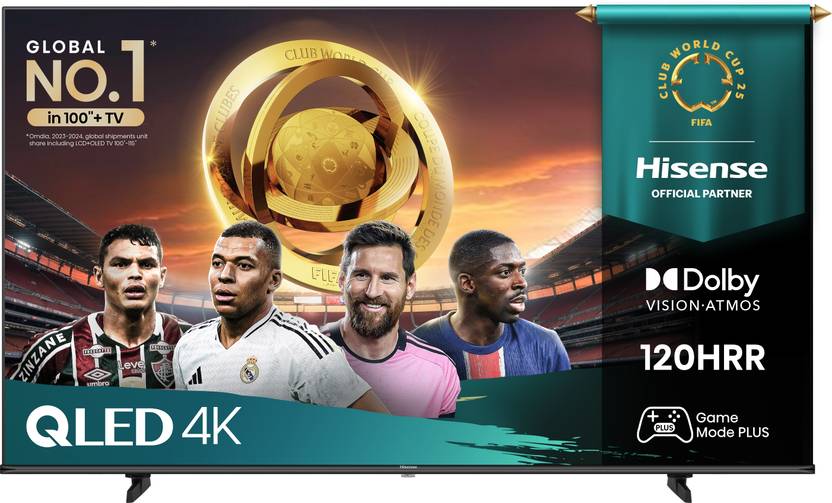
A QLED TV incorporates a film of tiny semiconductor nanocrystals, known as quantum dots, between the LED backlight and the LCD panel. When the light from the LED backlight passes through these quantum dots, they absorb and re-emit light at specific wavelengths, resulting in purer and more vibrant colors. This process significantly expands the color volume and improves brightness, especially for HDR (High Dynamic Range) content.
Neo QLED: An Evolution:
Samsung has further evolved QLED technology with Neo QLED. This advancement replaces the traditional larger LEDs with Quantum Mini LEDs, which are 1/40th the size of conventional LEDs. This allows for a far greater number of LEDs to be packed into the backlight, enabling thousands of local dimming zones. The result is significantly more precise control over brightness and contrast, getting closer to OLED’s black levels while maintaining QLED’s signature high brightness.
Pros of QLED TVs:
- Exceptional Brightness: QLED TVs, especially Neo QLED models, excel in brightness, making them ideal for well-lit rooms and handling reflections effectively. This also enhances HDR content, bringing out dazzling highlights.
- Vibrant Colors: Quantum dots produce a wider and more accurate color gamut, leading to incredibly vivid and lifelike colors.
- No Burn-In Risk: Unlike OLED, QLED technology is not susceptible to permanent burn-in, making it a worry-free choice for those who might leave static images on screen for extended periods (e.g., gamers with HUDs, news channel logos).
- Good Contrast (especially with Full-Array Local Dimming/Mini LED): While not true black like OLED, advanced QLEDs with numerous local dimming zones or Mini LED backlights achieve impressive contrast ratios and deep blacks that are a significant improvement over standard LED.
- Wider Range of Sizes: QLED technology is available across a broader range of screen sizes, including very large formats, often at a more accessible price point than comparable OLEDs.
Cons of QLED TVs:
- Black Levels Not Perfect: Despite advancements, QLED TVs still rely on a backlight, meaning they cannot achieve the absolute, pixel-perfect blacks of OLED. Some backlight bleed or blooming can still be present, though significantly reduced in premium models.
- Viewing Angles: While improved in newer models, viewing angles can still be a slight drawback compared to OLED, with some color and contrast degradation when viewed from extreme sides.
- Thicker Design: The presence of a backlight array generally makes QLED TVs slightly thicker than the wafer-thin OLED panels.
User Experiences with QLED TVs:
Users often rave about the vibrant and punchy colors of QLED TVs, making them excellent for watching sports, animated content, and anything with rich, bright visuals. Their high brightness is a consistent highlight, performing exceptionally well in living rooms with plenty of natural light. Gamers also appreciate the lack of burn-in risk and the excellent brightness for HDR gaming. Many reviewers note that modern QLEDs, particularly Neo QLEDs, have significantly narrowed the gap with OLED in terms of overall picture quality, making them a compelling alternative.
- “My Samsung QLED really shines in my living room, which gets a lot of sun. I used to struggle to see anything on my old LED TV, but the QLED cuts through the glare perfectly.” – Sarah L., Bengaluru
- “As a gamer, the no burn-in guarantee on my QLED was a huge selling point. I play for hours, and the colors are just incredible.” – Arjun K., Mumbai
The King of Contrast: What is OLED TV?
OLED, or Organic Light Emitting Diode, represents a fundamentally different approach to display technology compared to LED and QLED. It’s an emissive technology, meaning each individual pixel generates its own light.
How OLED TVs Work:
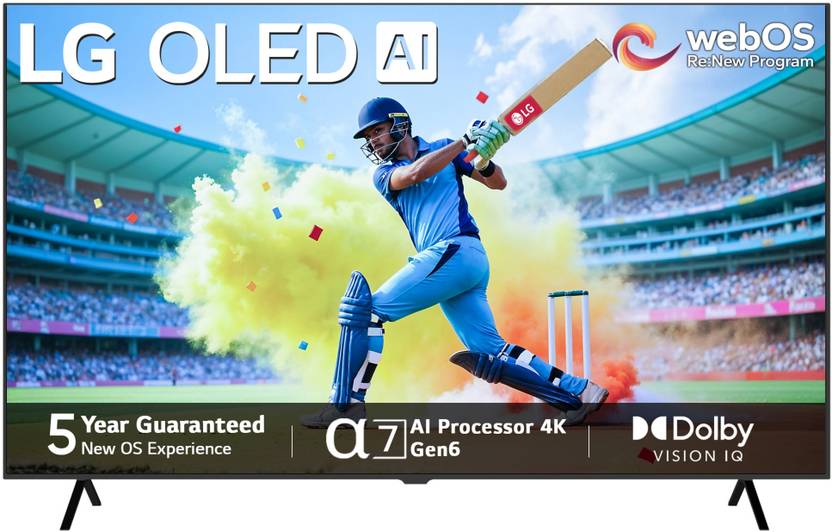
Unlike LED/QLED TVs that use a backlight, every single pixel in an OLED display is an organic light-emitting diode that can be individually turned on or off. This pixel-level control is the magic behind OLED’s legendary picture quality.
When a pixel is turned off, it emits absolutely no light, resulting in perfect blacks. When a pixel is on, it generates its own light and color. This precise control allows for an infinite contrast ratio, where the brightest whites can sit directly next to the deepest blacks without any light bleed or blooming.
Pros of OLED TVs:
- Perfect Blacks and Infinite Contrast: This is OLED’s undisputed champion feature. The ability to turn individual pixels off completely delivers unparalleled black levels and an infinite contrast ratio, leading to incredible depth and realism in images.
- Superior Picture Quality in Dark Rooms: The perfect blacks create an intensely immersive and cinematic viewing experience, especially in dimly lit or dark home theater environments.
- Vibrant and Accurate Colors: While not as bright as QLED, OLED TVs produce incredibly accurate and rich colors with excellent color volume, especially at lower brightness levels.
- Wide Viewing Angles: Colors and contrast remain consistent and true, even when viewing the screen from extreme off-angles. This makes them ideal for large gatherings where viewers are spread across a room.
- Blazing Fast Response Times: OLED pixels can switch on and off almost instantaneously (on the order of microseconds). This results in virtually no motion blur, making OLED TVs a dream for competitive gamers and fast-action sports enthusiasts.
- Ultra-Thin Design: Since no backlight is required, OLED panels can be incredibly thin, often as thin as a few millimeters, allowing for stunning aesthetic designs.
Cons of OLED TVs:
- Higher Cost: OLED TVs generally come with a premium price tag, especially for larger screen sizes, though prices have been steadily decreasing.
- Lower Peak Brightness: While OLED brightness has significantly improved in recent years (especially with technologies like QD-OLED and Micro Lens Array), they typically don’t reach the same peak brightness levels as top-tier QLED TVs. This can make them less ideal for very bright rooms with direct sunlight, where reflections might be more noticeable.
- Potential for Burn-In (Image Retention): Historically, OLED panels carried a risk of “burn-in,” where static images displayed for extended periods could leave a faint, permanent ghost image on the screen. While modern OLED TVs incorporate various preventative measures (pixel shifting, logo dimming, pixel refresh cycles) that make burn-in highly unlikely with normal varied content viewing, it remains a concern for specific use cases like displaying static news tickers or gaming HUDs for many hours on end.
- Limited Lifespan (compared to inorganic LEDs): As OLEDs use organic materials, they can degrade over time, though manufacturers have made significant strides in extending their lifespan.
User Experiences with OLED TVs:
OLED users consistently praise the “pop” and realism of the picture, often describing it as “cinematic.” The perfect blacks are a common talking point, especially for movie buffs and those who enjoy watching content in dark rooms. Gamers frequently highlight the incredible response times and lack of input lag, providing a noticeable advantage in fast-paced games. While some acknowledge the brightness limitations in very sunny rooms, most find the overall picture quality to be superior for critical viewing.
“The first time I watched a movie on my LG OLED, I was blown away by the black levels. It’s like nothing I’ve ever seen before; the stars in space scenes are truly black, not gray.” – Priya S., Chennai
“I’m a hardcore gamer, and the responsiveness of my OLED is insane. There’s zero blur, and everything feels so immediate. I’m not worried about burn-in with how much I vary my games.” – Rohit M., Delhi
Emerging Technologies: Mini-LED and Micro-LED
While OLED, QLED, and LED dominate the current market, two other technologies are shaping the future of displays: Mini-LED and Micro-LED.
- Mini-LED: This is an advanced form of LED backlighting that uses incredibly tiny LEDs (typically less than 200 micrometers) to create even more local dimming zones than standard full-array LED. This allows for significantly improved contrast, black levels, and brightness uniformity, bringing QLEDs with Mini-LED (like Samsung Neo QLED) very close to OLED performance in many areas, while maintaining the high brightness and no burn-in advantages. Mini-LED is a stepping stone between traditional LED and the ultimate Micro-LED.
- Micro-LED: This is the true next-generation display technology, often considered the successor to OLED. Micro-LEDs use microscopic, inorganic LEDs that are pixel-sized and self-emissive, much like OLED. This means they offer perfect blacks, infinite contrast, and wide viewing angles like OLED, but with significantly higher brightness, no burn-in risk, and potentially even longer lifespans due to using inorganic materials. The main hurdle for Micro-LED is the incredibly complex and expensive manufacturing process, which currently limits its availability to extremely large, ultra-premium displays.
Comparative Analysis: OLED vs. QLED vs. LED
Let’s break down how these technologies stack up across key performance indicators:
| Feature | LED TV (Standard) | QLED TV (Quantum Dot LED) | OLED TV (Organic LED) |
| Backlight | Yes (Edge-lit or Full-Array) | Yes (with Quantum Dot layer) | No (Self-emissive pixels) |
| Black Levels | Good (with local dimming) / Average | Very Good (especially Mini-LED) | Perfect (pixels turn off completely) |
| Contrast | Good / Average | Excellent | Infinite |
| Brightness | High | Extremely High | High (improving with newer models) |
| Color Accuracy | Good | Excellent (Wide Color Volume) | Excellent (Natural & Accurate) |
| Viewing Angles | Average (degradation at wider angles) | Good (some degradation at wider angles) | Excellent (consistent from all angles) |
| Response Time | Good (can have some motion blur) | Very Good (low input lag) | Near-Instant (virtually no blur) |
| Burn-In Risk | None | None | Low (with normal use, modern tech) |
| Lifespan | Very Long | Very Long | Long (improving) |
| Design | Varied (can be thin with edge-lit) | Can be thin (depending on backlight) | Ultra-thin |
| Energy Cons. | Good | Good to Moderate (brighter can use more) | Excellent (pixel-level control) |
| Price | Most Affordable | Mid-Range to High-End | Premium/High-End |
| Ideal Use | Budget-conscious, well-lit rooms, general viewing | Bright rooms, HDR content, gaming, vibrant colors | Dark rooms, cinematic experience, gaming, wide viewing angles |
Choosing Your Ideal Display: Matching Technology to Needs
The “best” TV isn’t a universal truth; it’s the one that best suits your specific needs, viewing habits, and environment.
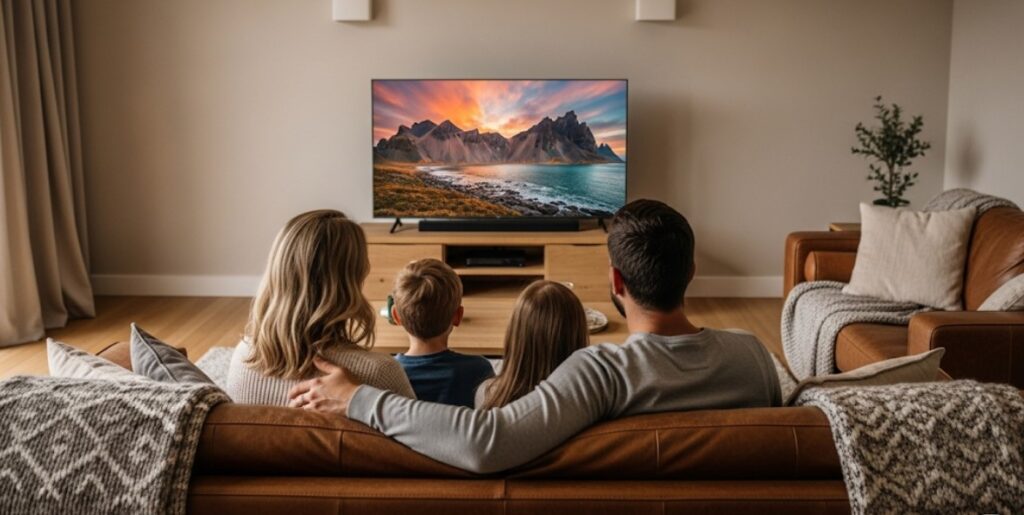
For the Budget-Conscious Buyer & Everyday Viewing: LED TV
If you’re looking for a reliable, affordable television for general family viewing, casual TV shows, or don’t require the absolute best in picture quality, a standard LED TV remains an excellent choice. They are versatile and widely available, offering good performance for their price point. They are particularly suitable for brightly lit rooms where high contrast isn’t the primary concern.
For Bright Rooms & Vibrant Colors: QLED TV (and Neo QLED)
If your primary viewing area is a bright living room with lots of natural light, a QLED TV is often the superior choice. Their exceptional peak brightness and vibrant color reproduction ensure a punchy and clear image even with ambient light. QLEDs are also fantastic for sports, animated movies, and HDR content where dazzling highlights are crucial. For gamers who spend long hours with static on-screen elements (like HUDs), the absence of burn-in risk is a significant advantage. The latest Neo QLED models, with their Mini-LED backlights, bridge the gap with OLED in black levels and contrast, offering a truly premium experience without the burn-in concern.
For Cinematic Immersion & Avid Gamers: OLED TV
For the ultimate cinematic experience, especially in a dedicated home theater or a dimly lit room, OLED reigns supreme. The perfect blacks and infinite contrast create an unparalleled sense of depth and realism, making movies and high-quality series truly come alive. OLED’s near-instant response times and wide viewing angles also make it the preferred choice for serious gamers who demand the fastest refresh rates and no motion blur. While the higher price and potential for burn-in (though largely mitigated in modern sets with normal use) are considerations, the picture quality for critical viewing is unmatched.
Reviews and User Experiences: Real-World Perspectives
Beyond technical specifications, real-world user experiences often paint the clearest picture.
- LED TV Users: Many users find LED TVs to be perfectly adequate for their needs. “It’s a great TV for the price,” says Ravi K. from Hyderabad. “The picture is clear, and it’s bright enough for our living room. We don’t watch a lot of dark movies, so the black levels aren’t an issue for us.” However, some advanced users upgrading from older sets might notice the difference: “Compared to my friend’s QLED, the colors on my basic LED don’t pop as much, and dark scenes can look a bit washed out,” notes Deepa S. from Pune.
- QLED TV Users: QLED owners frequently praise the vibrant colors and impressive brightness. “I love how bright my QLED is,” remarks Vikram J. from Bangalore. “Even with sunlight streaming in, the picture is still incredibly clear and colorful. HDR content looks amazing.” Gamers are also vocal proponents. “I can game for hours on my QLED without worrying about screen retention. The colors are punchy, and the input lag is minimal,” states Alisha R. from Delhi. Some users moving from OLED might note a slight difference in black levels but often find the trade-off for brightness and no burn-in worthwhile.
- OLED TV Users: The consensus among OLED owners is often about the sheer beauty of the picture. “The blacks are just mesmerizing,” gushes Ananya M. from Kolkata. “Watching films on my OLED is an experience in itself. It feels like I’m in a movie theater.” Gamers consistently highlight the smooth motion and responsiveness. “Playing fast-paced shooters on my OLED is a game-changer. There’s no ghosting, and everything is so fluid,” shares Siddharth P. from Chennai. Concerns about burn-in are present but often mitigated by proper usage: “I’m careful not to leave static images on for too long, but with normal viewing, I haven’t had any issues,” notes Gauri D. from Mumbai.
Key Takeaways for Your Purchase Decision
- Room Lighting is Crucial:
- Bright Room: Consider a QLED or Neo QLED for their superior brightness and glare handling.
- Dark Room/Home Theater: An OLED will provide the most immersive experience with its perfect blacks.
- Content Matters:
- Movies & Cinematic Content: OLED delivers the ultimate contrast and black levels.
- Sports & Cartoons: QLED‘s vibrant colors and high brightness can make these pop.
- Gaming: OLED offers unparalleled response times and low input lag, while QLED offers high brightness and no burn-in risk.
- Budget is a Factor:
- Entry-Level/Budget: LED TVs offer excellent value.
- Mid-Range to High-End: QLED provides a fantastic balance of performance and features.
- Premium/High-End: OLED delivers the pinnacle of picture quality, often at a higher price.
- Consider Future-Proofing: While all three technologies are excellent, Mini-LED and Micro-LED are pushing the boundaries, especially in the QLED space, offering enhanced performance that blurs the lines between QLED and OLED.
Frequently Asked Questions (FAQs)
Here are some common questions to help you further clarify your decision:
Q1: Is OLED always better than QLED? A1: Not always. While OLED generally offers superior black levels and contrast due to self-emissive pixels, QLED (especially with Mini-LED) often excels in peak brightness and color volume, making it better for bright rooms. The “better” choice depends on your specific viewing environment and priorities.
Q2: What is the main difference between LED and QLED? A2: The primary difference is the addition of a quantum dot layer in QLED TVs. This layer enhances the color accuracy and brightness of the LED backlight, leading to a much more vibrant and detailed picture compared to a standard LED TV.
Q3: Is burn-in still a major problem with OLED TVs? A3: For most users with varied content viewing habits, burn-in is not a significant concern with modern OLED TVs. Manufacturers have implemented various technologies like pixel shifting, logo dimming, and pixel refresh cycles to mitigate the risk. However, for specific static-image heavy use cases (e.g., displaying news channels with static tickers for many hours daily, or certain gaming scenarios with unchanging HUDs), the risk is still present, though low.
Q4: Which TV technology is more energy-efficient? A4: Generally, OLED TVs tend to be more energy-efficient, especially when displaying darker content, as individual pixels can turn off completely. However, advancements in Neo QLED technology have also made some top-tier QLEDs highly energy-efficient. Standard LED TVs are also quite energy-efficient.
Q5: Can I get an 8K TV with any of these technologies? A5: Yes, 8K resolution is available in both premium QLED and OLED models from major manufacturers. However, native 8K content is still relatively scarce, and the visual benefit over 4K is less pronounced at typical viewing distances, especially on smaller screens.
Q6: What does “local dimming” mean, and why is it important? A6: Local dimming refers to the ability of an LED TV’s backlight to dim or brighten specific zones of the screen independently. This is crucial for improving contrast and black levels, as it allows dark areas to appear darker without affecting the brightness of adjacent bright areas, significantly enhancing picture quality.
Conclusion: Your Perfect Picture Awaits
The evolution of display technology has gifted us with incredible options, each with its unique strengths. Whether you prioritize the deep, inky blacks and cinematic immersion of OLED, the dazzling brightness and vibrant colors of QLED (especially with the power of Mini-LED), or the solid value and widespread availability of LED, there’s a perfect TV waiting to transform your entertainment experience.
By understanding the underlying technologies and aligning them with your specific viewing habits, room conditions, and budget, you can confidently navigate the market. Step into the future of home entertainment with a display that truly brings your content to life.
Reference Links for Facts:
- LED TV Explained: Pai International Blog – LED vs OLED vs QLED
- QLED Technology Details: Samsung US – What are QLED TVs?
- OLED Technology Basics: US Department of Energy – OLED Basics
- OLED Burn-in Information: Asurion – OLED burn-in: How to fix screen burn-in on your phone & TV
- Mini LED Explained: Samsung Singapore – Mini LED vs. OLED : What’s the differences?
- Micro LED Explained: Ansys – What is a MicroLED?
- Energy Consumption Comparison: Tom’s Guide – Can you save money on your electric bill by buying an OLED TV?
Ready to upgrade your viewing experience? Explore the latest OLED, QLED, and LED TV models from leading brands today and discover the perfect picture for your home!
